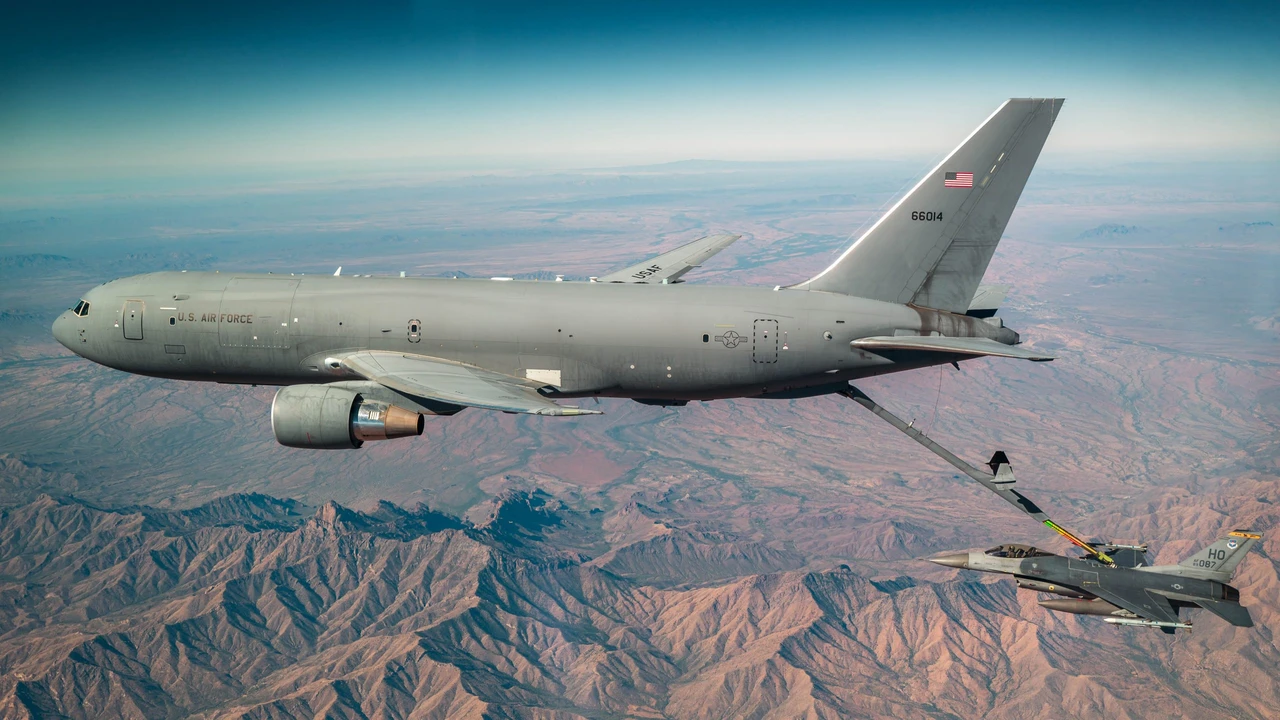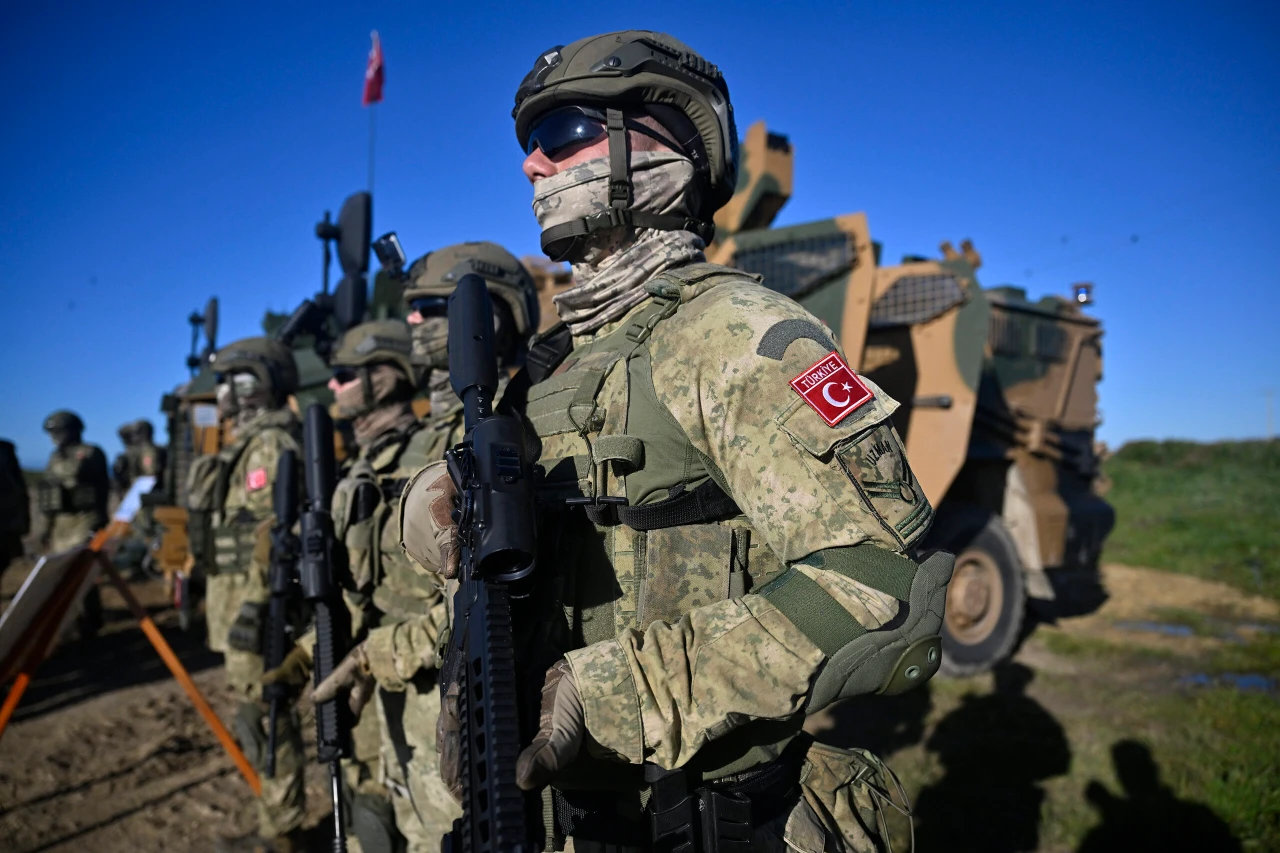Greece seeks to acquire Boeing KC-135R Stratotanker from US
 A U.S. Air Force KC-46 Pegasus assigned to Seymour Johnson Air Force Base refuels an F-16 Fighting Falcon from the 309th Fighter Squadron, Nov. 3, 2023, over the Barry M. Goldwater in Range, Arizona. (Photo via U.S. Air Force Photo by Airman 1st Class Mason Hargrove)
A U.S. Air Force KC-46 Pegasus assigned to Seymour Johnson Air Force Base refuels an F-16 Fighting Falcon from the 309th Fighter Squadron, Nov. 3, 2023, over the Barry M. Goldwater in Range, Arizona. (Photo via U.S. Air Force Photo by Airman 1st Class Mason Hargrove)
Greece has officially requested the acquisition of four Boeing KC-135R Stratotanker aircraft from the United States, according to a report by Greece-based OnAlert.
The Hellenic Air Force (HAF) recently sent a formal request to U.S. authorities, expressing interest in acquiring up to four Boeing KC-135R Stratotanker tanker aircraft through the Excess Defense Articles (EDA) program.
This program allows for the transfer of surplus military equipment to foreign allies at no cost.
Enhancing aerial refueling capabilities
Greece has been notified that the list of available surplus defense materials includes several KC-135R air refueling aircraft which the U.S. operates hundreds of them.
The Hellenic Air Force has requested detailed information on the availability of up to four of these aircraft to meet its operational needs. This interest in tanker aircraft is part of a broader strategy to enhance the aerial capabilities of the Hellenic Air Force, as outlined in a force structure plan approved in 2021.
Greece has also sought comprehensive information and support concerning the technical condition, required repairs, and modernization of the KC-135R aircraft.
Additionally, Greece has requested training for pilots and ground technicians to ensure the effective use and maintenance of these strategic assets.
The acquisition of these tanker aircraft aims to bolster Greece’s air force capabilities by enabling fighter jets, such as the F-16, Mirage, and Rafale, to remain airborne for extended periods through mid-air refueling. This capability is critical for extending the operational range.
The Importance of Aerial Refueling
Aerial refueling allows aircraft to fly longer distances with no landing, extending the operational reach of air forces. This capability is particularly important for missions that require long-range travel, such as strategic bombing, reconnaissance, or rapid deployment of forces.
With the ability to refuel in mid-air, aircraft can remain in the air for extended periods, providing a sustained presence in areas of interest.
This is crucial for operations that require continuous air coverage, such as air patrols, surveillance, and close air support.
Operational Flexibility
Aerial refueling provides air forces with the flexibility to reposition assets quickly in response to emerging threats or changing mission requirements. It allows for dynamic retasking of aircraft without the constraint of fuel limitations.
During high-intensity conflicts or rapid-response situations, the ability to refuel aircraft in the air ensures that air assets can be continuously employed without the downtime associated with landing and refueling on the ground.
Strategic, geopolitical advantages
Aerial refueling enhances the ability of a nation to project power globally. By extending the reach of its air force, a country can influence events far from its borders, support allies, and deter adversaries.
Refueling in mid-air reduces the dependency on forward operating bases and refueling stations, which can be vulnerable to enemy attacks. It also minimizes the logistical footprint and support requirements in contested or remote areas.
Combat effectiveness
Aircraft can take off with a full payload of weapons and minimal fuel, maximizing their combat load.
Once airborne, they can refuel to achieve full fuel capacity, enhancing their strike capabilities.
Refueled aircraft can avoid potentially hazardous airfields in conflict zones, reducing the risk of being targeted during takeoff and landing phases.
Examples of application
- Strategic bombers: For bombers like the B-52 or B-1, aerial refueling is essential for long-range strike missions, enabling them to reach distant targets with no intermediate stops.
- Fighter jets: Fighters like the F-16, Mirage, and Rafale benefit from refueling to maintain air superiority, perform extended patrols, and conduct multiple sorties in rapid succession.
- Reconnaissance, surveillance: Aircraft involved in intelligence, surveillance, and reconnaissance (ISR) missions can stay on station longer, gathering critical information without interruptions.



